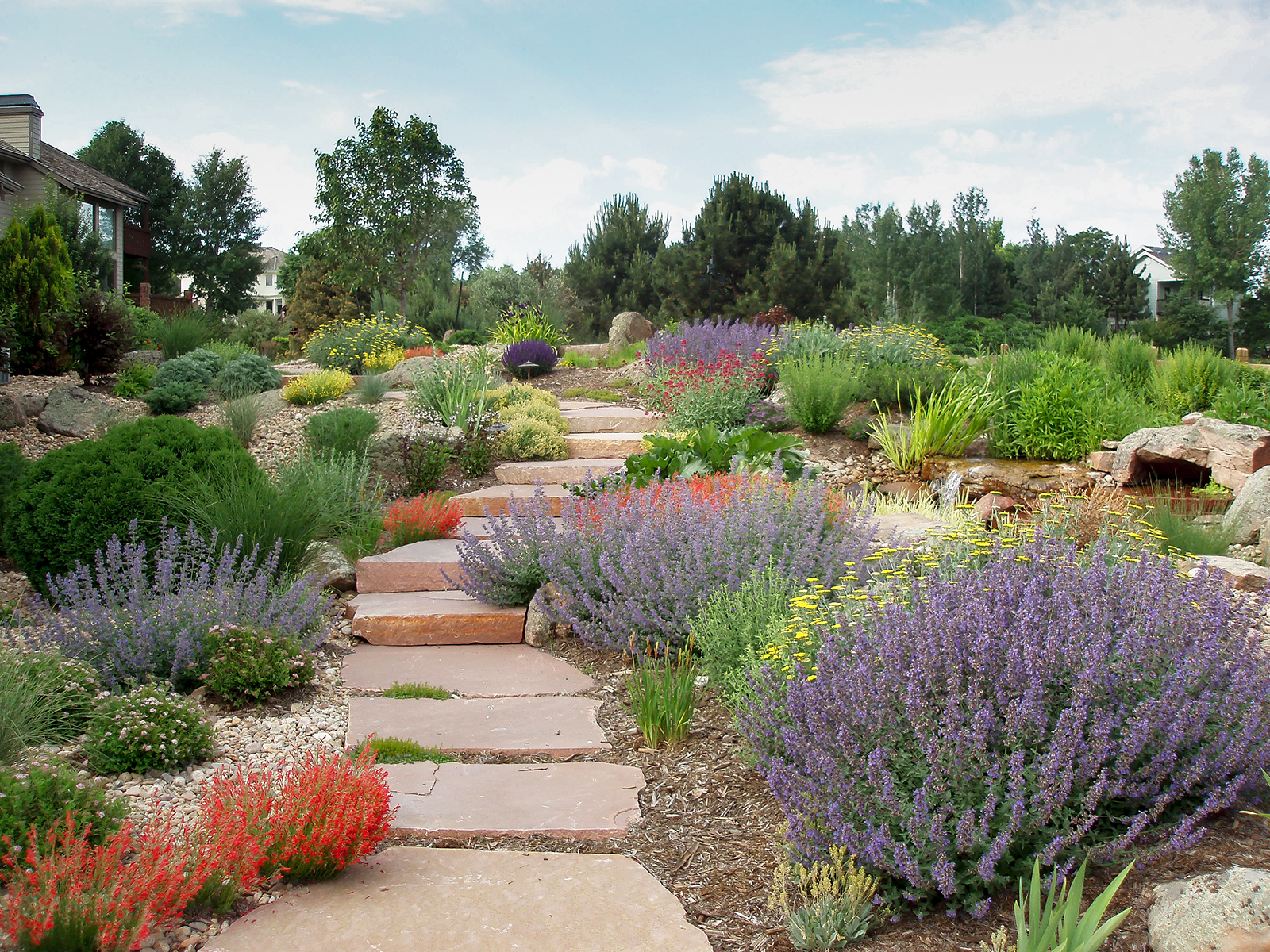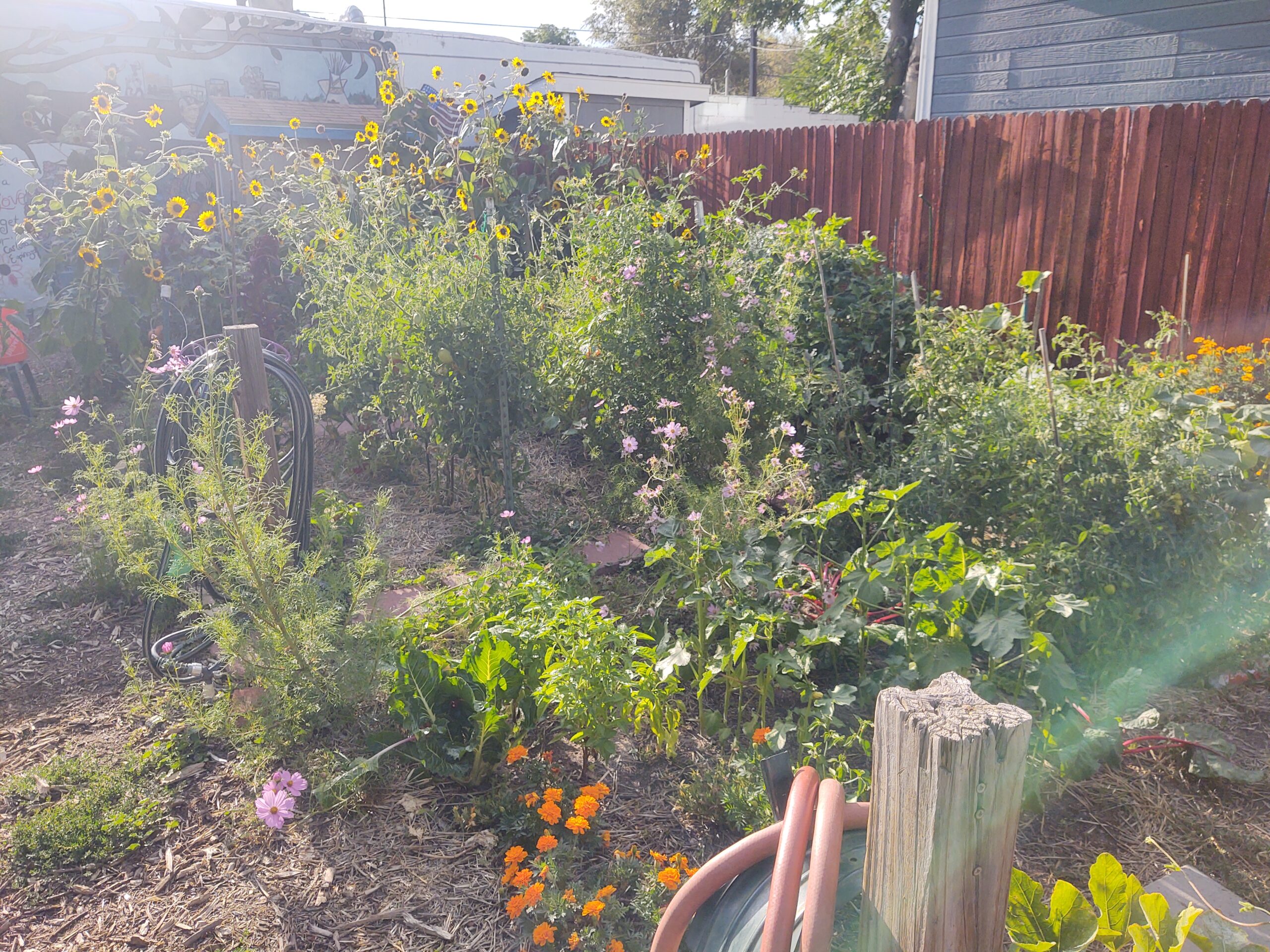If you have been paying attention to the news, you’ve seen a lot of coverage on the Colorado River Basin and its dwindling water supplies the “bathtub” rings of Lake Mead; the controversy of which states can reduce their water usage and when.
Walking through our verdant community and home gardens, it may seem like water scarcity is someone else’s problem. But climate change, a growing population and annual weather events (or the lack of them) are squeezing nearly everyone’s water supplies. Even our largest and most stable local water providers in Colorado are prioritizing water conservation policies and programs. Aurora Water, which serves the city’s population of more than 386,000 and provides some water to surrounding communities, is experiencing concerningly low reservoir levels and has declared Drought Stage 1 with watering restrictions going into effect on May 1.
While conserving water during a drought is critical, we all need to do our part to conserve water every year. The more of a buffer we can create between our water demand and our total supply, the more resiliency we have to handle the unexpected.
There is a lot of water to be saved outdoors, even in our vegetable gardens. With the right tools and methods, your veggie patch will use less water than a traditional Kentucky bluegrass lawn.
What are these amazing conservation tools and methods?
- Healthy soil
- Mulch
- Watering low and slow
- Choosing water-wise plants
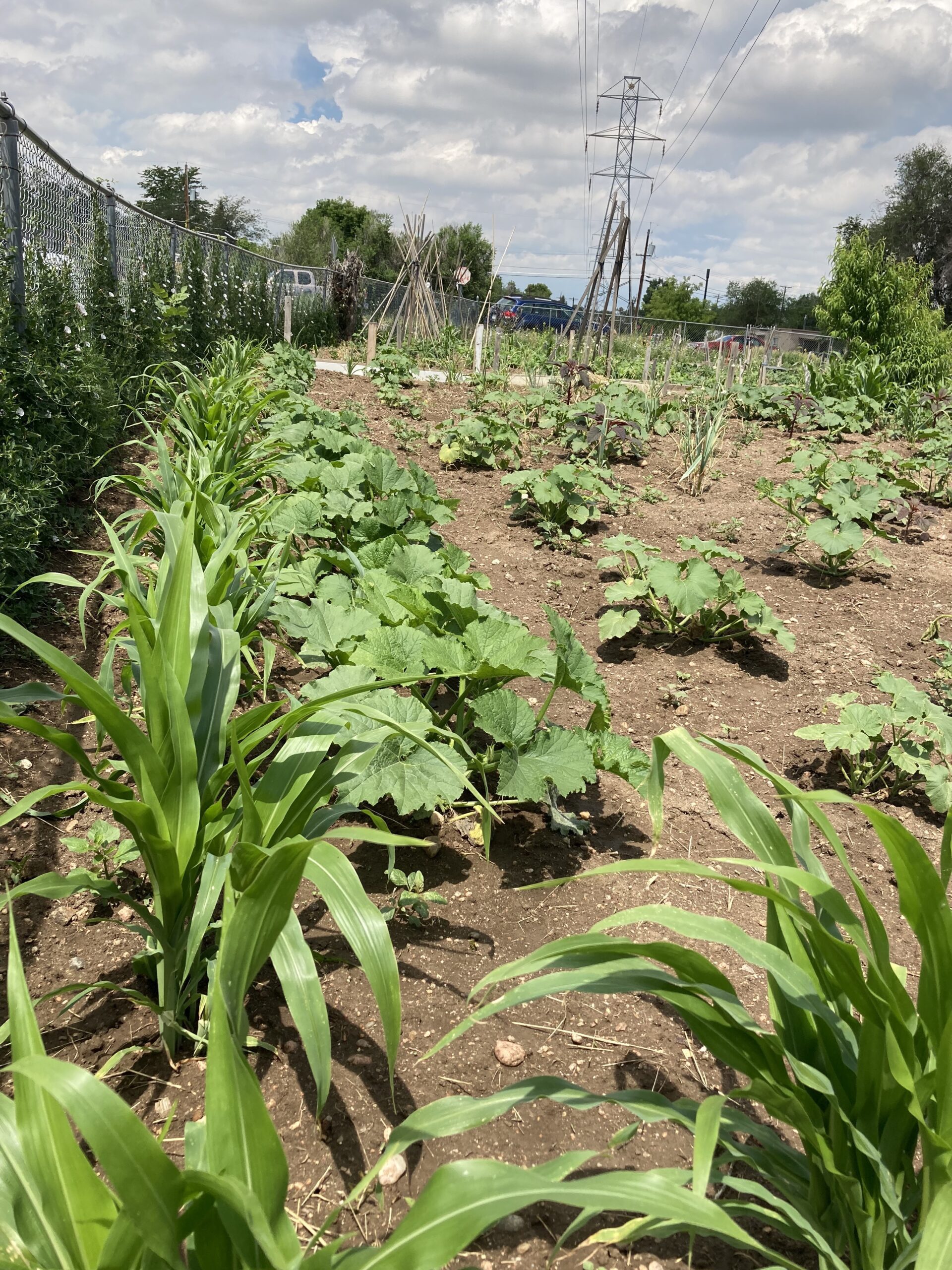
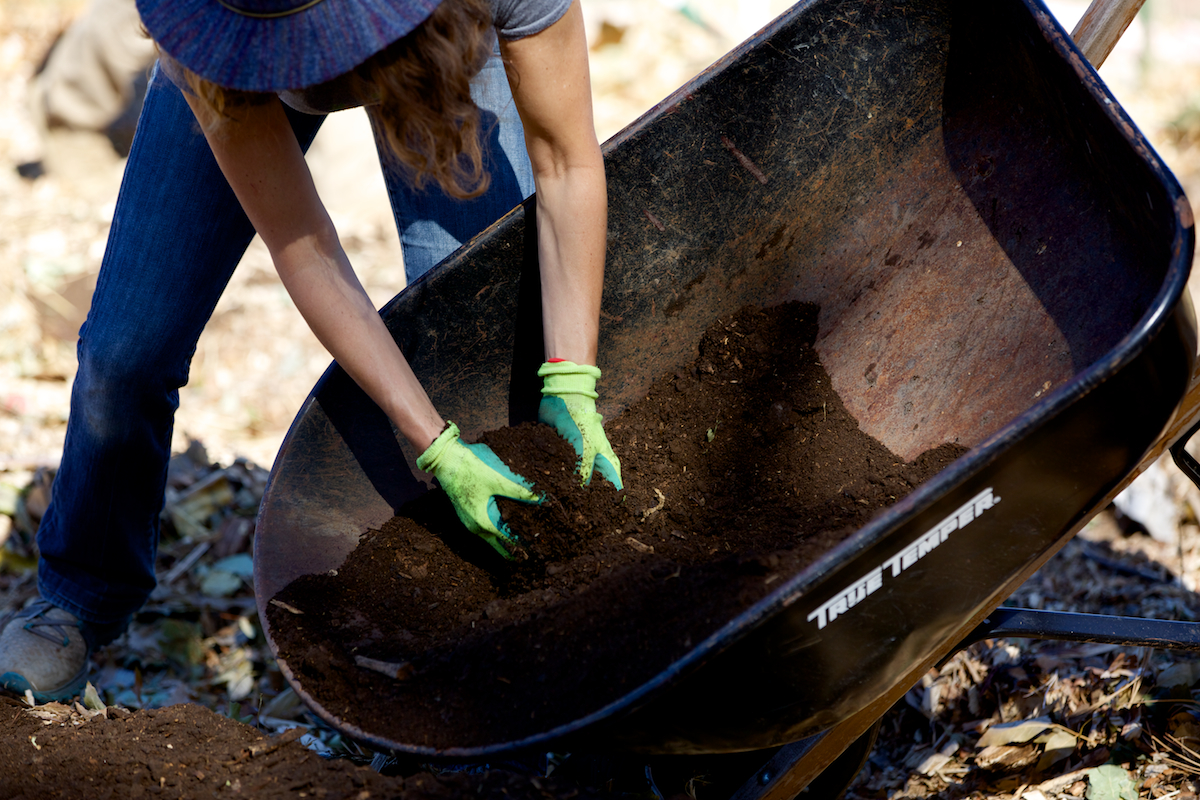
Healthy Soil
Soil that is healthy for growing vegetables and saving water is soil that is rich in organic material, airy and contains moisture. The natural soils of the Denver metro area are generally lean and either very clayey or very sandy, which is not a healthy environment for veggies. Amending your soil is therefore necessary every year. We recommend organic amendments, meaning materials derived from living matter.
Organic amendments such as compost (purchased or homemade), worm castings, composted manure and coco coir will not only add nutrients, but will increase the water holding capacity of sandy soils and improve the tilth of clay soils. Those elements help water slowly move through the ground and reach your plant’s roots.
In the spring, cover your entire garden with two to three inches of your chosen amendment (or a mix) and till it in. After harvest in the fall, you can cover your beds with a layer of leaves. The base of the layer will decompose over the winter, and then you can till it all in with an additional amendment the following spring.
Mulch is Magic
Organic mulch makes the magic happen. It benefits your vegetables in so many ways:
- Retains moisture in the soil
- Prevents erosion
- Cools the surface of the soil
- Inhibits the growth of weeds
- Reduces compaction as you weed or harvest
- Prevents soil surface crusting so that water doesn’t run off
- Keeps plants clean
- Creates a tidy look
Select an organic mulch that will decompose quickly, such as straw, grass clippings, dried leaves, non-glossy newspaper or a combination of those. Start off with a layer three inches thick and replenish throughout the season as needed.
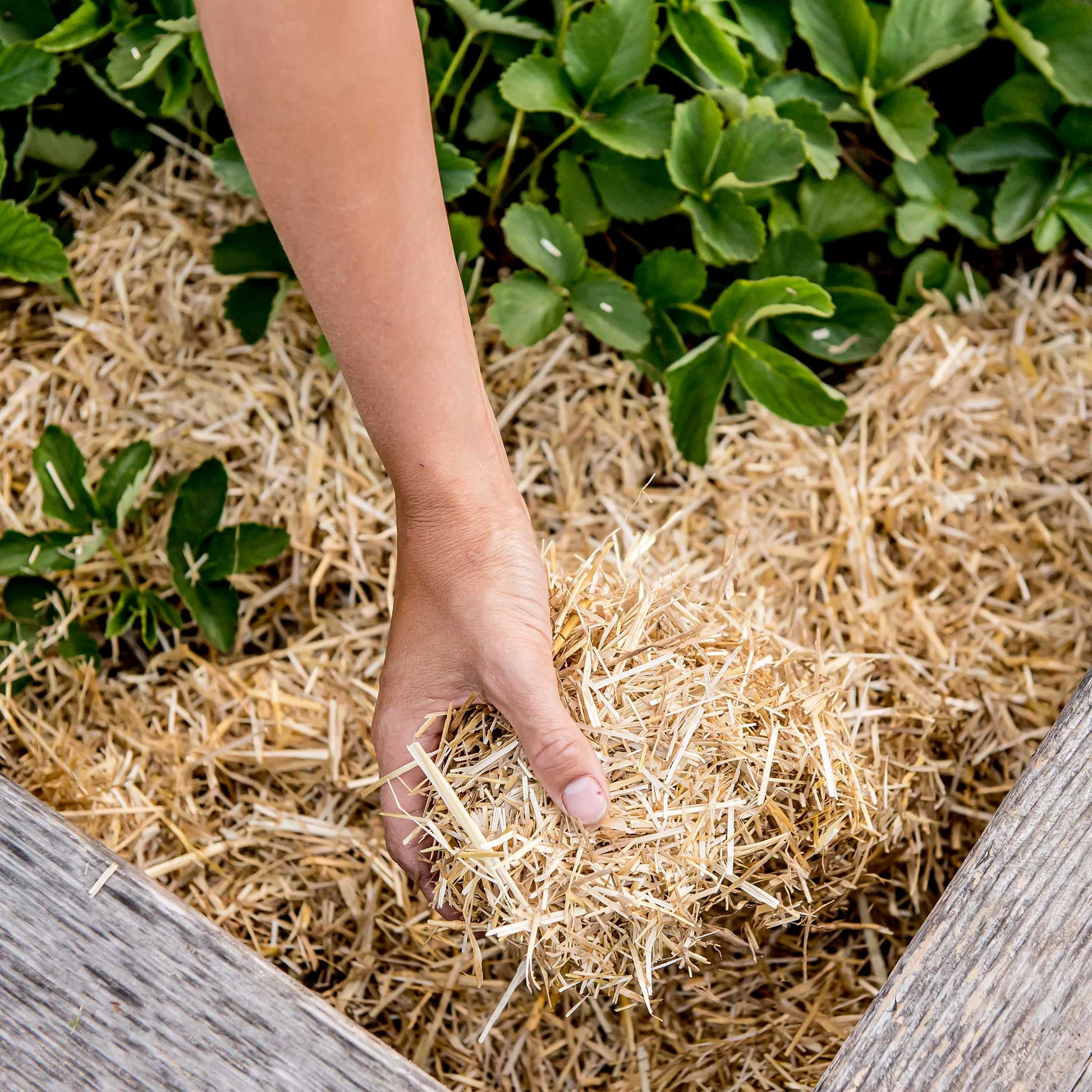

Watering Efficiently
There is a lot to know about applying water efficiently in the vegetable garden. Vegetable gardens in our region generally require about one inch of water per week, but the efficient gardener pays attention to the weather and adjusts accordingly. Your plants’ watering needs will change as they mature. For seeds and small seedlings, water shallowly and keep soil evenly moist which may mean watering daily if temperatures warrant it. When seedlings are at least four inches tall and have several mature leaves, you can reduce watering to about every other day to encourage deep root growth.
Don’t use your eyes to check if your plants need water—use your fingers. Seeing some wilting during a hot day is okay. To know if your plants really need water, check the moisture level two inches below the soil surface with your fingers. If the soil is obviously moist, dark and cool, no need to water.
Avoid overhead watering. It’s tempting to rely on your pop-up sprinklers, but that can trap humidity that encourages the growth of powdery mildew and other diseases.
The most efficient type of irrigation for a garden is in-line drip. You can add a drip zone for your vegetable garden onto your current sprinkler system (it must have its own zone). Update your controller settings each month, as your veggies need a lot less water in April than in July.
Alternatively, you can connect a regular hose to drip tubing or soaker hoses on top of your mulched bed and run it. You can then run your hose manually. Do not bury these hoses because of concerns that soil may get into your water line. We don’t recommend hose bib timers, as they can break and waste hundreds of gallons or worse.
Hand watering works best for small areas or containers. Always use a nozzle on your hose to slow down the volume and flow rate and water as close to the ground as possible. Do your hand watering in the coolest and least windy parts of the day. In the summer, that means before 9 a.m. or after 7 p.m.
Go Water-wise
Many of us love to plant vibrant annuals like marigolds near our vegetable gardens to attract those awesome pollinators! Generally, annuals require more water than water-wise or native perennial flowers. So switch it up by planting a water-wise and/or native perennial border to accomplish the same purpose. After the perennials are established, they’ll need little to no water. Make sure to mulch them with a three-inch layer of mulch like bark or wood chips. They’ll use less water while providing habitat for the bees and other insects that pollinate our vegetable plants.
This article was written by Diana Denwood, Senior Water Conservation Specialist for Aurora Water
For more information on Aurora Water Conservation Plan click here
